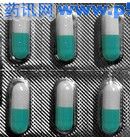Phase 2 Trial Determines Effective And Safe Oral Clolar Dosing Regimen For MDS Patients (ASH 2010)
Clolar, given orally at 25 mg daily for five days during a 28-day cycle, is well-tolerated by myelodysplastic syndromes patients and may be an effective treatment for patients who failed Vidaza or Dacogen therapy.
Dr. Mikkael A. Sekeres from the Cleveland Clinic Cancer Center presented these preliminary Phase 2a trial results last month during the American Society of Hematology (ASH) meeting.
Clolar (clofarabine) is marketed by Genzyme and is currently approved to treat certain patients with acute lymphoblastic leukemia, a type of white blood cell cancer. Clolar disrupts DNA synthesis in cancer cells, leading to their death and inhibiting the development of new cancer cells.
A previous Phase 2 clinical trial showed that higher-risk myelodysplastic syndromes (MDS) patients respond to Clolar (see related Beacon news).
In this trial, the researchers wanted to determine at what dose orally-administered Clolar could be safely used to treat MDS patients and acute myeloid leukemia patients who no longer responded to Vidaza (azacitidine) or Dacogen (decitabine) treatment and had also failed another treatment type.
Researchers divided patients into groups that were given 25 mg, 35 mg, or 55 mg of Clolar daily for five days of a 28-day cycle. Patients could receive a maximum of eight treatment cycles.
Preliminary results show that of the 27 patients enrolled from September 2007 to January 2010, 20 patients have stopped treatment before completing all eight cycles. Eight patients discontinued therapy due to serious side effects, and seven patients discontinued due to disease progression.
After 30 days, two patients in the group treated with 55 mg of Clolar (50 percent) and one patient in the group treated with 35 mg of Clolar (13 percent) died. The 30-day mortality rate was 14 percent.
Preliminary results on the efficacy of Clolar treatment were available for six patients in the 35 mg treatment group and 10 patients in the 25 mg treatment group.
The researchers observed a response in five of the 16 evaluable patients (31 percent). A patient in the 35 mg treatment group achieved complete remission, while four patients in the 25 mg treatment group achieved a complete bone marrow response. One of the patients who experienced a complete bone marrow response also had improved red blood cell counts and no longer required transfusions.
The patients who responded were treated for a median of two cycles. Most of the responses to treatment were seen after the first cycle.
No efficacy results were available for the 55 mg treatment group because none of the patients in that group completed at least two treatment cycles. The researchers found that the 55 mg daily dose of Clolar was too high and led to serious complications, including pneumonia and other infections as well as kidney problems.
Other serious side effects observed were low potassium levels in the blood, high blood pressure, weakness, fatigue, and respiratory problems.
The researchers concluded that the 25 mg dosage of Clolar was effective while remaining safe for patients and warrants further study.

|




